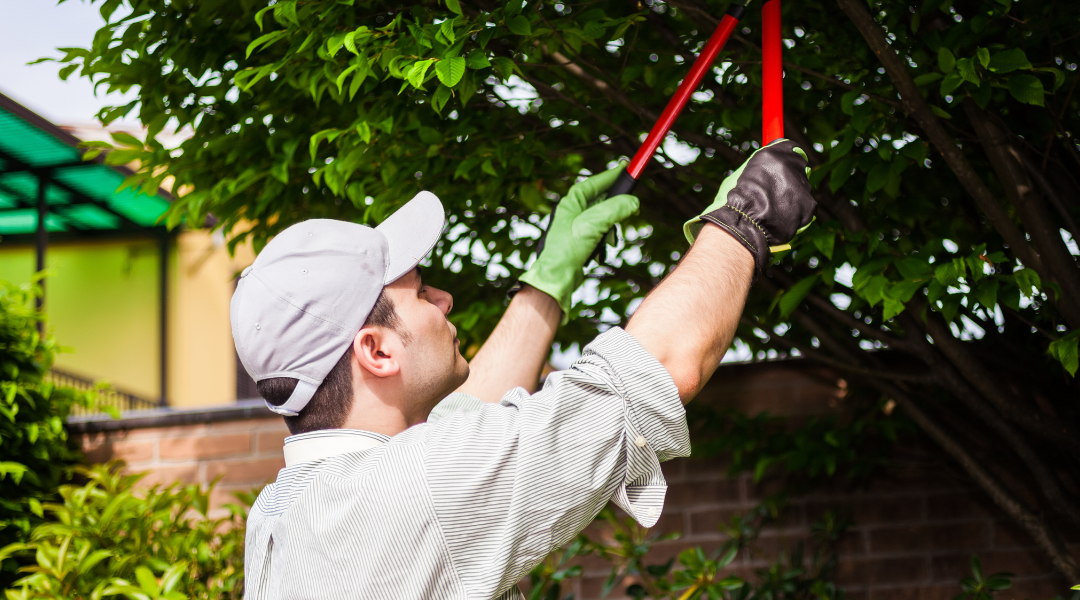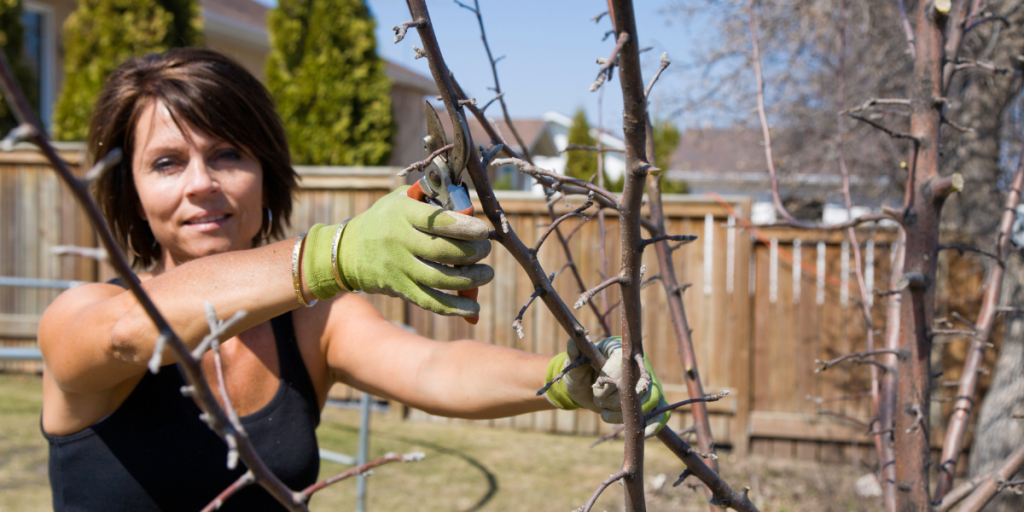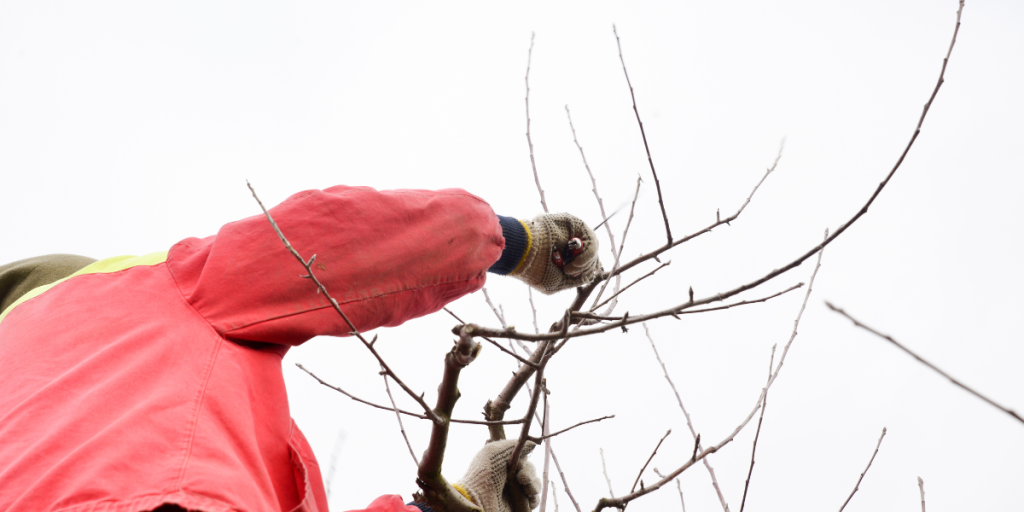When Is The Right Time to Prune: Seasonal Guidelines for Tree Health and Beauty
Pruning is a vital horticultural practice that encompasses both art and science, focusing on the careful removal of specific parts of a tree to enhance its health, appearance, and overall functionality. Trees play a crucial role in our environment, providing us with oxygen, shade, wildlife habitat, and aesthetic beauty. Therefore, proper pruning is essential for maintaining the well-being of trees and promoting their longevity. In this discussion, we will explore the significance of pruning for tree health and aesthetics, as well as delve into how seasonal changes influence tree growth and influence pruning requirements.
Winter Pruning (Late Dormant Season)
Winter pruning refers to the practice of trimming and shaping trees during their dormant period, which typically occurs in late winter or early spring, before new growth begins. Pruning during this time offers several advantages and is commonly employed for deciduous trees.
Advantages of Winter Pruning
- Encourages vigorous growth: By pruning during the dormant season, the tree’s energy is directed towards new growth once spring arrives. This can lead to more robust and healthy branches and foliage.
- Better visibility: Without leaves, it’s easier to assess the tree’s overall structure and identify specific branches that need attention, such as those that are crossing or rubbing against each other.
- Reduced risk of disease transmission: Many tree diseases and pests are less active during the winter months, decreasing the chances of spreading infections through pruning wounds.
- Quicker healing: Since the tree is not allocating resources to new growth during the dormant period, it can allocate more energy to heal pruning cuts, promoting faster closure of wounds.
- Shape control: Winter pruning allows for more precise shaping and structural adjustments, helping the tree develop a strong framework.
Pruning Deciduous Trees During Their Dormant Period: Deciduous trees lose their leaves in the fall and go into a dormant state during the winter. Pruning these trees during their dormancy offers the most benefits, as they are not actively growing, and the risk of causing harm or stressing the tree is minimized.
Identifying Dead or Diseased Branches for Removal
- Look for branches with no buds or signs of life. Dead branches are often brittle, dry, and lack any green tissue.
- Observe for signs of disease, such as discoloration, cankers, or fungal growth on branches. Remove infected branches to prevent the spread of disease to other parts of the tree.
- Check for pest infestations like borers or insects that have damaged the branches extensively.
Tips for Shaping the Tree’s Structure
- Focus on the central leader: Maintain a strong central leader in trees with a central main stem. This leader should be the tallest and dominant stem, helping the tree grow upright and balanced.
- Maintain well-spaced branches: Identify and remove branches that are growing too closely together or crossing each other, as they can lead to rubbing and potential damage in the future.
- Use proper pruning techniques: Make clean cuts just outside the branch collar (swollen area where the branch meets the trunk) to promote faster healing and minimize the risk of diseases entering the wound.
- Gradual pruning: Avoid removing a large portion of the tree’s canopy at once, as this can stress the tree. Instead, opt for gradual pruning over several years to achieve the desired shape.
Precautions to Avoid Excessive Pruning During Winter
- Don’t over-prune: Removing too many branches can weaken the tree and reduce its ability to photosynthesize and produce food.
- Avoid pruning during freezing temperatures: Extremely cold temperatures can cause pruning wounds to take longer to heal, potentially leading to damage from ice and frost.
- Know the species-specific needs: Different tree species have varying tolerance to pruning during winter. Some may be more sensitive and should be pruned in early spring instead.
- Watch for early signs of new growth: If buds start swelling or breaking, it’s an indication that the tree is coming out of dormancy. In such cases, stop pruning to prevent harm to the new growth.
- Hire a professional if unsure: If you are uncertain about how much to prune or how to shape the tree correctly, consider seeking advice or hiring a certified arborist to do the pruning for you.
Spring Pruning (Pre- and Post-Bloom)
Spring pruning is an essential horticultural practice that involves selectively removing specific parts of plants during the spring season. It serves several purposes, such as shaping the plant’s growth, promoting healthier development, encouraging better flower production, and enhancing fruiting for fruit trees. Spring pruning can be divided into pre-bloom and post-bloom pruning, each with its unique objectives and techniques.
Pre-Bloom Pruning for Flowering Trees:
Pre-bloom pruning is typically done in late winter or early spring before the trees start to flower. The main goal of pre-bloom pruning is to shape the tree, remove any damaged or diseased branches, and encourage more robust flower production. By removing deadwood and overcrowded branches, the tree’s energy is redirected towards healthy growth and promoting an abundance of blossoms.
When pruning flowering trees before they bloom, it’s crucial to avoid cutting off flower buds. Different flowering trees have varying blooming patterns, so it’s essential to know the specific tree’s flowering habits to time the pruning correctly. Trees that bloom on old wood (last year’s growth) should be pruned immediately after flowering, while those that bloom on new wood (current season’s growth) can be pruned in late winter or early spring.
Encouraging Healthy Growth and Better Flower Production: To encourage healthy growth and better flower production, focus on the following pruning techniques:
- Remove dead and diseased branches: This prevents the spread of diseases and ensures the tree’s resources are utilized efficiently.
- Thin out crowded branches: Reducing overcrowding allows more sunlight and air circulation, promoting overall tree health and reducing the risk of fungal infections.
- Shape the tree: Prune to create an open and balanced canopy, which helps sunlight reach all parts of the tree evenly, promoting more vigorous flowering.
Post-Bloom Pruning to Remove Spent Flowers and Deadwood:
Post-bloom pruning takes place after the tree has finished flowering. The primary purpose of post-bloom pruning is to remove spent flowers (deadheading) and any dead or damaged branches. Deadheading not only improves the tree’s appearance but also prevents the tree from using its energy to produce seeds, instead directing it towards root and vegetative growth.
Additionally, post-bloom pruning allows for better inspection of the tree’s structure, making it easier to identify and remove diseased or weakened branches that might have become apparent during the flowering period.
Trimming for Fruit Trees to Enhance Fruiting: For fruit trees, spring pruning is crucial to ensure a bountiful harvest. The timing and techniques vary depending on the type of fruit tree:
- Apple and pear trees: These trees should be pruned during late winter or early spring before bud break. Pruning focuses on thinning out branches to allow sunlight penetration into the canopy, promoting even fruit ripening and reducing the risk of disease.
- Stone fruit trees (peach, plum, cherry): These trees are best pruned after harvest when the fruit has been picked. This approach reduces the risk of disease transmission and allows the tree to put its energy into healing and preparing for the next season’s growth.
- Citrus trees: Citrus trees generally require minimal pruning, but you can selectively remove dead or diseased branches to maintain their health.
Caring for Young Trees During Their Early Spring Growth: Young trees need particular attention during their early spring growth to establish a strong and healthy structure. Here are some essential tips:
- Remove any competing leaders: Young trees may develop multiple main branches. Choose the strongest and most centrally located leader and remove the others to prevent structural issues as the tree matures.
- Train the tree’s shape: Guide the young tree’s growth by pruning to promote a well-balanced canopy and prevent weak crotches and overcrowding.
- Mulch and water: Apply mulch around the base of the tree to retain moisture and suppress weeds. Adequate watering is crucial, especially during dry spells, to support young root development.
- Stake if necessary: If the tree is prone to leaning or being affected by strong winds, provide support with stakes until it establishes a strong root system.
Summer Pruning (Mid-Growth Season)
Summer pruning during the mid-growth season is an essential horticultural practice that involves selectively cutting back certain parts of a tree to manage its vigorous growth and promote overall health and productivity. It is typically done during the summer months when the tree is actively growing, after the initial spring growth spurt has slowed down. This pruning technique offers several benefits and helps maintain the tree’s desired size and shape, while also addressing issues such as water sprouts and unwanted branches.
- Managing vigorous growth with summer pruning: Some trees have a tendency to put on rapid and excessive growth during the spring and early summer. If left unchecked, this vigorous growth can lead to weak, spindly branches and an uneven canopy. Summer pruning helps to control this exuberant growth, redirecting the tree’s energy towards developing more balanced and sturdy branches.
- Controlling the size and shape of the tree: By selectively removing specific branches and shoots during the summer, gardeners can maintain the desired size and shape of the tree. This is particularly important for fruit trees, as it ensures that the energy of the tree is focused on producing quality fruits rather than unnecessary vegetative growth.
- Dealing with water sprouts and unwanted branches: Water sprouts are fast-growing vertical shoots that emerge from dormant buds on branches or trunks. They often grow vigorously during the summer and can weaken the tree’s structure. Summer pruning is an effective way to remove these water sprouts and other unwanted branches, helping to maintain a healthier and more aesthetically pleasing tree.
- Pruning for better air circulation and light penetration: Summer pruning opens up the tree’s canopy, allowing better air circulation and sunlight penetration into the inner parts of the tree. Improved air circulation reduces the risk of fungal diseases by allowing foliage to dry faster after rain or dew, and better light penetration ensures that more leaves receive adequate sunlight for photosynthesis.
- Avoiding late summer pruning for some tree species: While summer pruning is generally beneficial, late summer pruning might not be suitable for all tree species. Late-season pruning can stimulate new growth that may not have enough time to harden off before winter, leaving the tree vulnerable to frost damage. It’s generally best to avoid late summer pruning for species that are sensitive to frost, or in regions with early and severe winters.
Fall Pruning (Pre-Dormant Season)
Preparing trees for winter with fall pruning: Fall pruning is a crucial horticultural practice that takes place during the pre-dormant season, typically in late autumn before the first hard freeze. It involves trimming and shaping trees to enhance their health and appearance while preparing them to withstand the challenges of winter. By removing certain branches, trees can allocate their resources more efficiently and develop a strong structure to cope with harsh weather conditions.
Removing hazardous branches before storms: One of the primary reasons for fall pruning is to eliminate weak, dead, or damaged branches that could pose a hazard during winter storms. These branches are more susceptible to breakage under the weight of snow, ice, or strong winds. By identifying and removing these hazardous limbs, property owners can prevent potential accidents, property damage, and power outages.
Pruning for disease prevention and control: Fall pruning provides an opportunity to address and control certain diseases that may have affected the trees during the growing season. By cutting away infected or diseased branches, the spread of pathogens can be curtailed, reducing the risk of the disease persisting or spreading in the spring. Proper disposal of the pruned material is essential to prevent reinfection.
Addressing pest infestations during fall: Pests can infest trees throughout the year, and fall is no exception. Pruning during this season allows for the removal of infested branches, which can help control the pest population before they lay eggs or find shelter in the tree during winter. Combining fall pruning with other integrated pest management strategies can significantly improve the tree’s resilience against insect pests.
Tips for pruning newly planted trees in the fall
- Timing: It is essential to give newly planted trees sufficient time to establish their root systems before pruning. Generally, it’s advisable to wait at least one growing season before conducting any significant pruning.
- Focus on dead or damaged branches: In the first year after planting, concentrate on removing dead or damaged branches to promote healthy growth and minimize stress on the young tree.
- Avoid heavy pruning: Newly planted trees are still establishing themselves, and heavy pruning can hinder their growth and development. Stick to light, selective pruning to shape the tree and remove any immediate issues.
- Use clean, sharp tools: Always use clean and sharp pruning tools to make clean cuts, reducing the risk of introducing infections or causing unnecessary damage to the tree.
- Maintain the central leader: For most trees, especially those with a central leader growth pattern (e.g., conifers), ensure the central leader remains intact and dominant. This promotes upward growth and a balanced canopy.
- Consider hiring a professional: If you are uncertain about the pruning process or the specific needs of your tree, consider consulting an arborist or a tree care professional. Their expertise can ensure the tree receives proper care and attention.
Frequently Asked Questions
When is the best time to prune my trees?
The ideal time for pruning trees depends on the type of tree you have. Generally, for deciduous trees (those that lose their leaves in the winter), the best time for pruning is during late winter or early spring, before new growth begins. For evergreen trees, the best time is in late winter or early spring as well, but you can also consider pruning during the dormant season.
Can I prune my trees at any time of the year?
While it’s possible to prune trees at any time of the year if necessary, it’s essential to avoid certain periods when pruning can be detrimental to the tree’s health. For example, it’s best to avoid pruning in late summer and early fall since the tree’s energy is focused on preparing for the winter, and new growth may not have enough time to mature before cold weather arrives.
Why is late winter or early spring the best time for pruning deciduous trees?
Pruning during late winter or early spring allows the tree to heal quickly as it enters its active growing season. The tree’s energy is redirected to the pruned areas, stimulating new growth and reducing the risk of diseases and pests that may be more prevalent during the warmer months.
What about pruning during summer? Is it recommended?
Pruning during summer can be stressful for the tree, especially in areas with hot and dry climates. It can lead to excessive water loss and make the tree more susceptible to sunburn and other environmental stressors. If possible, it’s better to avoid pruning during the summer months and focus on other tree maintenance activities like watering and pest control.
Can I prune my trees during fall?
Pruning during fall is generally not recommended for the same reasons as summer pruning. The tree is preparing for dormancy, and new growth may not have enough time to harden off before winter, making it vulnerable to frost damage.
Conclusion:
In conclusion, the practice of tree pruning is not a mere aesthetic exercise but a vital aspect of tree care that significantly impacts the health, growth, and longevity of trees. Throughout this discussion, we have emphasized the importance of timing in tree pruning. Understanding the natural growth patterns and seasonal cycles of different tree species allows us to make informed decisions about when and how to prune, ensuring the best possible outcomes.




